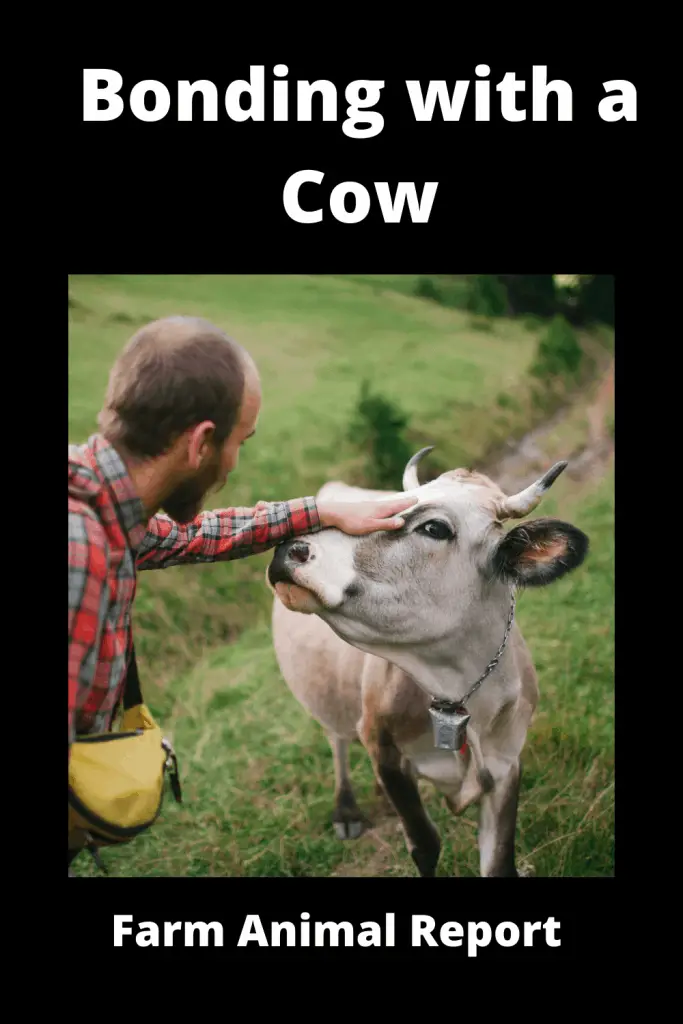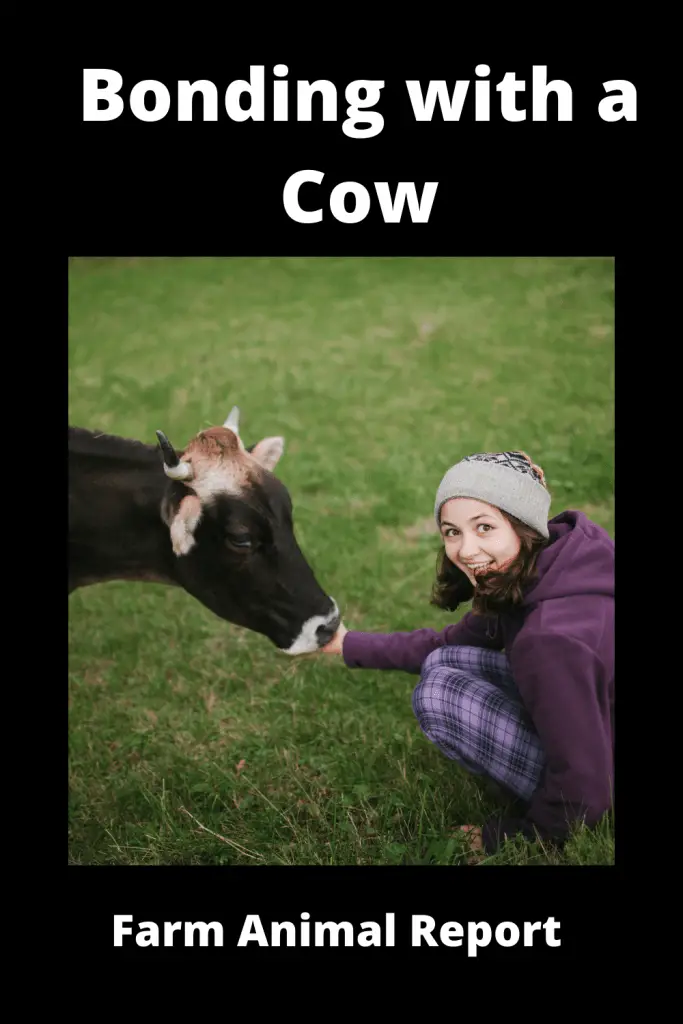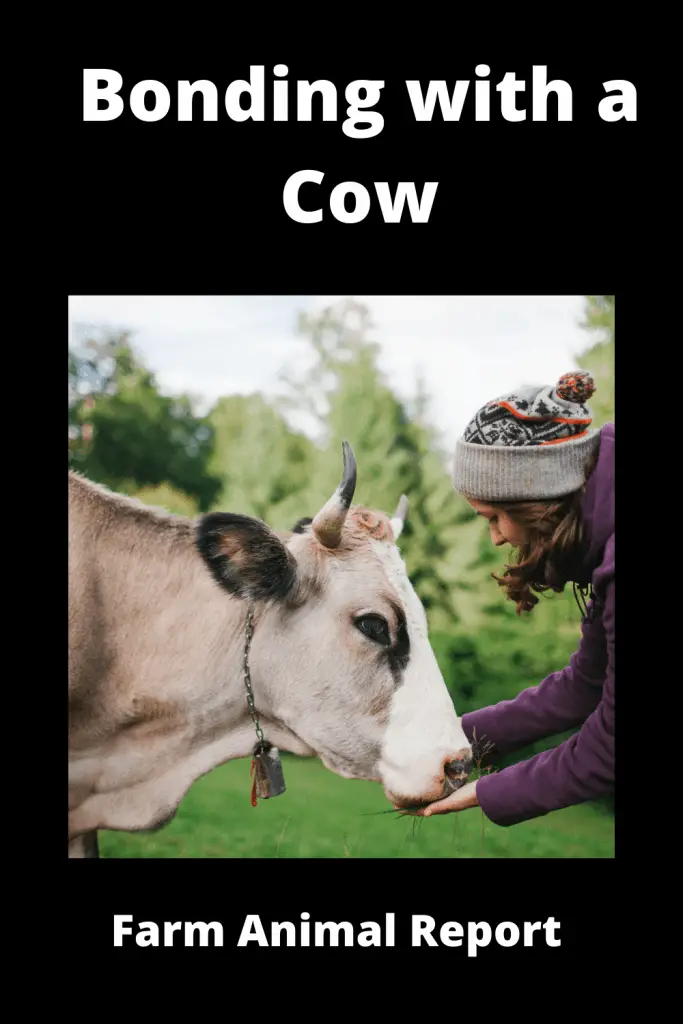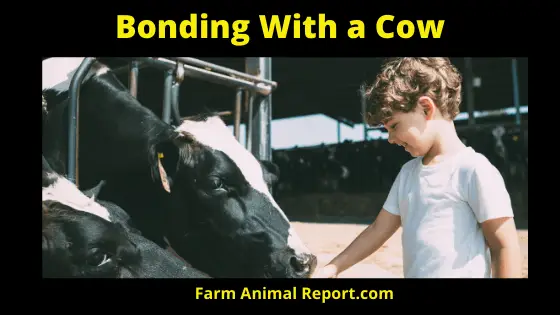Bonding with a Cow. Building a Relationship with a Cow or a calf Takes Time and Your Presence. The Younger you start the better to have the cow learn to trust your relationship with them. You can Build Your Bond By
- Walking With Them
- Stroking Them
- Whispering to Them
- Feeding, Bottle feeding Them
- Let them Learn Your shape – Visually
- Let them Learn your voice – Audibly
- Let them Smell You – Scent
- Positively Reward Them – Trust
How to get Cows to Come to You?
Cows are among amazing and exciting animals. Cows are often thought of as beef, leather, steak, and global dairy producers. Most people take them as food items or products, rather than as highly emotional and intelligent animals with each having different personalities. However, some neuroscientists dispelled countless myths about these bright and passionate bovines. They Have what some have described as Eureka Moments – Where they can be Optimistic or opposite of That Pessimistic. How to get Cows to Come to You?
Cows are typically recognized for their ubiquity as several kinds of products that worth cashed out in terms of their contributory value. The characteristic values of cows as living sensitive beings with distinct characters often are glossed or ignored. Two Neuro Scientist Studied and Reported on Cow intelligence in ” The Psychology of Cows” Their Paper is Here.
However, even the humans working in the food industrial complex or those humans who are responsible for the development of humane welfare guidelines, know that cows are sensitive animals, and they do suffer and feel pain.
To learn more about Raising Cattle Check out Amazons Resources
Otherwise, we wouldn’t worry about creating any rules and regulations that guard the animals. Many Groups have studied and monitor the treatment of cattle, that even though we raise them for food, that they are treated Humanely.
Bonding with a Cow / Using Caution
One thing you must always remember is that no matter how friendly and how close you are. Cows are large animals and can accidentally hurt you just because of their large size and weight. No malice, but just large
Learning and Awareness
Cows can learn different tasks quickly, have long-term memory, recognize the site of a hidden moving thing, distinguish complex stimuli, and differentiated humans from one another. Both calves and cows showed that they learned fear responses to humans who previously had mistreated them or they had bad experiences that reinforced their caution of people.
See Our Guide – Ways to Make Money Cattle Farming
Cows do have the ability to display complex spatial memory and have the capability to distinguish among other individual cows. They can recognize faces as different from the looks of other animal species.
Emotions
Cows are emotional animals, and they can show the emotion of fear and anxiety. The better they see, the better they feel. The cows can show their feelings through the posture of their ears too. Relaxed ear postures indicate that the cows are feeling okay, secure, and calm.
Cows and Human Bonding
Understanding the behavior of animals is very vital, as the more significant the knowledge, the better the ability to predict the animal’s response. Many farmers have the skill to understand the Body language of the cows.
With time, the Farmer will able to know whether the animal is ill, depressed, hungry, or what is the signs they are showing. Cattle are very intelligent animals, and they can learn things very quickly.
Spending Time
It is always better to interact with the cattle, as more interaction will keep the cow quieter. Therefore, it is advisable to start communication when the cow is young. The younger the interaction begins with the calves, the more durable; the interaction goes with positive memories ahead as cows can recognize the voice and even the vehicle, car or truck, of the farmer.
The temperament of a cow ( just like people, our temperament varies a lot from one person to another) is one of the primary aspects of their personality concerning their reaction to humans. It is related to the fearfulness or the response to the fear stimuli rather than aggression that reflects the position in the dominance order. Many Times an aggressive cow or bull of an animal relates to the previous experience of the animals have had, and the frequency of the handling.
The genetic difference of different cow breeds also plays a vital role in their temperament. For instance, Friesian cows are more sensitive to sound and touch as compared to the beef breeds
. The attitude of cows like docile, aggressive, nervous, or lively correlated to the heart rate and breathing rate. Docile cows are better milk producers that also related to the calmness of the handler.
Some breeds of cows can react strongly to the presence of a human, and they can remember the aversive behavior of humans in the milking parlor and thus a reduction in the milk can take place.

The herd person plays a vital role in shaping the temperament of the cow in their care. Extra care to the young calves will help to reduce the flight distance. However, positive interaction decreases with age, although regular positive contact at any age may reduce the strength of the adverse reaction to later handling.
Some of the Factors that can Lead to Aggressive behaviors and Stopping any positive bonding going on are a few of these
- Specific Breeds seem to be more aggressive. Jersey, Angus, Brahma
- Mother Related – Cow will protect her calves
- Fighting over feed – Usually happens when cows are too close and competing for feed
- Comfort – Cows are uncomfortable in their current conditions – which can lead to irritability
- Stress Aggression – Many things can cause that, new people, new procedures, New Production equip, milkers
- Pain Aggression – If Animal is in Pain, injury illness, disease etc.
A permanent intercommunication between cows and humans makes them easier to handle. Several studies conducted proof that cows respond best to the person who is confident and consistent in handling them. The cows communicate with their keepers, specifically during the time of calving.
The communication of cows may be in the form of licking, touching, petting, grooming, etc. The conversation can also be in the form of verbal or visual, i.e., talking to the cows and looking at the cow.
A firm dominant attitude combined with a caring personality is a perfect combination if cattle are to be contented.

THE TYPES OF COMMUNICATION WITH THE COWS
Cows can recognize and respond to different human temperaments that can affect their response to handling. farmer is angry, Farmer is Happy, Farmer is worried) There are three primary interactions that cows pick up on.
- Hand and arm interaction – Sight
- Verbal interaction – Sound
- Sense and smell interaction. – Scent
These communications with the cows can be pleasant by patting, stoking, or can be aversive through hitting, striking, prods, and performed with varying degrees of confidence.
Some experts suggest that respect or fear of the handlers may be essential to enable cattle to move with ease and discourage them from attempting to force interaction with humans.
It is always crucial for the Farmer, Hands, to assess the animal temperament so that they can predict their behavioral reactions to handling and milking and alter their behavior accordingly.
Early Bonding With Calves
Bonding with a Calf when it is young the Calves can become quite Pet Like. Young cows may have a positive association with humans as they get bucket feeding, sometimes Bottle-Feeding. Once they are older they sometimes lose some of the relationships they had when they were younger, , because of the size of the herd. Farmers have fed with more mechanical means because of necessity. Just don’t have the time to spend with each cow. But Time spent will strengthen any relationship with their cows.
Newly calved heifers have to join the rest of the milking herd, so they must learn to cope with being mixed with the older cows.
It is not difficult to train a calf; however, it does require time to do. As calves grow up to a much larger cattle, but they can still be your pets.
Spending Time
It is always easy to walk in the herd, and spend time with a cow, scratches them, and even talk to them several times a day. However, cows are seriously quiet animals. Like all other pets, cows as pets are a commitment.
They need regular time spent with Them if someone wants to keep them as a pet. The cows are docile and are very hardy. The calves are sweet and gentle and generally easily trained.

Stroking, Petting, Talking to a Calf
This interaction is the best way to interact with the calf by spending time walking up close to the young calves. It includes patting at their back, talking with them, and walking with them. The interaction becomes solid by providing some rewards. This hand-on interaction is also essential for steers and heifers too.
Steers need you to be gentle and firm with them regularly to show them your dominancy. The training of calves is crucial too, as letting them know that gentle nudging, pushing, and butting is not acceptable.
Sharing the Birth
To enjoy the birth of the calf, the owner must have a strong relationship with the cow before she calves. By walking regularly to the cow for a few weeks, a strong bond develops between the cow and the owner. Ig the owner is present soothing and supporting the Mother.
That goes a long way with Building Trust with her and the new Calf
8 Steps to Bonding With a Cow
- Move gently in the herd
- Whisper with the cows
- Reward them with something they like
- Remain firm with the cows to remain the one in charge – If Challenged
- Regular walk to the herd
- Positive behavior with the cow by patting, resting the back
- Reduce any unfamiliar sounds, objects to avoid stress
5 Things to Avoid When Bonding with a Cow
- Don’t yell or shout at the cows
- Avoid hitting them with a stick
- Prevent any stress to the cow
- Avoid any negative – cruel behavior to the cow
- Providing adequate space to the cows
World Cattle Breeder Associations
| Cattle Association | Location | Link |
|---|---|---|
| National Cattleman's Beef Associations | United States | NCBA |
| United States Cattlemans Association | United States | USCA |
| Ohio Cattlemans Association | Ohio | OCA |
| American Angus Association | United States | AAA |
| United Kingdom Cattle Associations | UK | UKCA |
| Australia Cattle Associations | Australia | ACA |


